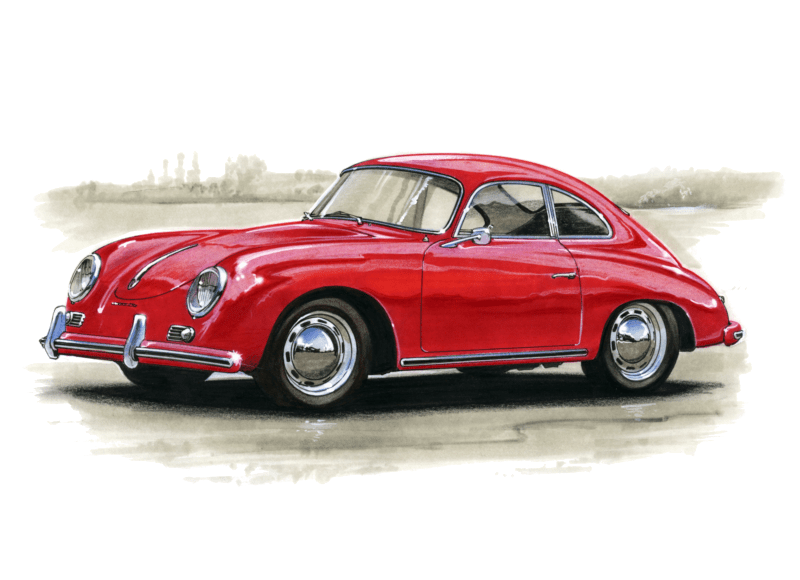
The Porsche 356 is an iconic sports car that marked the beginning of a legacy for the renowned automobile manufacturer, Porsche. It was the brainchild of Ferdinand Porsche, the founder of the company, and his son, Ferdinand “Ferry” Porsche. The production of the Porsche 356 commenced in 1948, making it the first vehicle ever produced by the Porsche company.
Following World War II, the Porsche family sought to create a car that captured the essence of their automotive expertise and passion. The 356 was handcrafted with meticulous attention to detail, and it quickly became a symbol of precision engineering and exhilarating driving experiences.
Although the 356 was the first car that bore the Porsche badge, its development didn’t start from scratch. It was heavily influenced by the Volkswagen Beetle, which Ferdinand Porsche had been involved with designing before the war. The Beetle’s air-cooled, rear-mounted engine and its streamlined body shape provided a foundation for the Porsche 356’s design.
The first Porsche 356 models were produced in a small workshop located in Gmünd, Austria. Known as the Gmünd coupes, these early models had aluminum bodies due to the scarcity of resources in post-war Europe. Approximately 50 units were hand-built in Gmünd between 1948 and 1950, and they set the stage for the later success of the Porsche 356.
In 1950, production shifted to Stuttgart, Germany, where the iconic Porsche factory, still in operation today, was established. The corporate headquarters and production facilities were set up in the re-purposed facilities of a former sawmill. By moving production to Germany, Porsche gained access to a more extensive supply chain and a growing automotive market, allowing the company to further refine and expand the 356 lineup.
Over the years, the Porsche 356 underwent various improvements and updates, including changes to the engine, chassis, and body design. In 1955, the 356 Speedster was introduced, which featured a lighter and more minimalist design, catering to the desires of sports car enthusiasts who sought a more Spartan driving experience. The Speedster became an instant classic and continues to be highly sought after by collectors today.
The production of the Porsche 356 continued until 1965, when it was succeeded by the Porsche 911. By that time, the 356 had become an icon in the automotive world, revered for its timeless design and exhilarating performance. In total, over 76,000 units of the Porsche 356 were produced throughout its 17-year production run.
The Porsche 356 holds a special place in Porsche’s history, as it laid the foundation for the company’s future success. Its timeless design, engineering brilliance, and exhilarating driving dynamics set the stage for the development of the Porsche sports cars we know today. For automotive enthusiasts and collectors, the Porsche 356 remains a symbol of Porsche’s engineering prowess and the beginning of an extraordinary legacy.